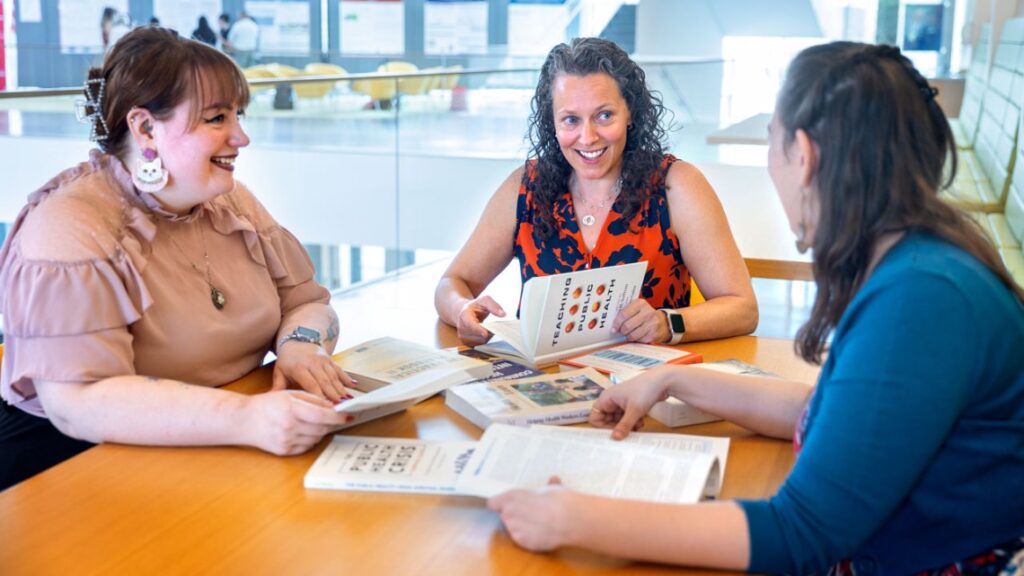
Medical innovation is reaching new heights every year. What scientific breakthroughs can we expect on the market in the coming decade? What challenges will we face in adopting them?
Professor Sean Nicholson, director of the Cornell Sloan Program in Health Administration, welcomed Wyatt Gotbetter, SVP and worldwide head of Parexel Access Consulting, and Dr. Gregory B. Franz, MD, MPH, MHA, hematologist and medical oncologist at the Kirkland Cancer Center, to explore answers to these questions in the recent Keynote webcast “Bringing New Science to Market: Innovation, Adoption, and Health Policy Challenges.”
Biotech and pharmaceutical firms spend about $80 billion each year on research and development in order to try to bring new therapies to the market. What is in the pipeline that might have a big positive effect on the health of the population in the future?
Gotbetter: “If we think just about the past five years, and of course that includes the pandemic, I think the rate of innovation and the number of launches has been remarkable. We can’t have this discussion without acknowledging the validation and the importance to all of us of the RNAi vaccines from BioNTech and Moderna. Moderna, on the heels of that success and being flush with sales of their COVID vaccine, is really advancing a number of therapeutic products as well as vaccines – really advancing their RNAi technology into the therapeutic space and oncology specifically.
In the same time, we’ve seen the approval of a couple of CAR-Ts truly advancing life-saving therapy in hematology and oncology. I think we’ll see gene therapies becoming safer and easier to manufacture, hopefully at lower costs. There’s just a pipeline of literally hundreds of programs where we’ll see gene therapy go from rare disease and disease that has very, very high morbidity perhaps into things managed more chronically with small molecule drugs – like heart failure.”
We have a couple of CAR-T therapies on the market that are Food and Drug Administration (FDA) approved. Are there similar kinds of classes of compounds that have yet to be approved that you think might potentially have a similar health impact?
Franz: “Leveraging the immune system to identify and kill cancer cells – that’s really what’s going on here. This is T cells doing what T cells do against cancer cells. I know that’s a very simple explanation. It’s very difficult to develop these compounds and to do this safely, but I think that’s where the money and the future is.”
It takes a long time, and it’s very expensive for biotech and pharmaceutical firms to run clinical trials and, even preceding that, to identify compounds that are promising enough to start a clinical trial. The current estimate is about $2.6 billion in investment across a portfolio of compounds in order to statistically assure a company that they’re going to have one approved compound. Where do companies come up with that money, and in the current climate, is it difficult for companies to raise the funds they need in order to invest in those drugs?
Gotbetter: “That $2.6 billion figure also includes the cost of failure. Even if we think about a successful drug compound, if you boil down the numbers, hundreds and hundreds of drug candidates will be considered before you start your phase one and then roughly one in ten of those will make it through to approval. It’s fraught with risk. But even if you could streamline that process, you’re probably looking at hundreds of millions to a billion dollars.
The amount of money that’s poured into the biotech sector over the past few years has been remarkable. We’ve seen, though, a massive sea change in the past year. Biotech has been the engine of discovery and innovation for large pharmaceutical companies. The largest companies in the world that certainly have formidable R&D engines employing thousands of people still turn to biotech to find innovation, to find a compound that has been tested, that shows a proof of concept, and can move forward.
The headwinds of the past year or two – interest rates and some of the perceived threats of the Inflation Reduction Act, which could reduce pricing power of the industry – has really slowed down [venture capital] funding.
I think what that means is that probably the rate of innovation will slow down a little bit in the sense that there may be fewer programs being pursued simultaneously, so a company may really focus on the crown jewels instead of many at once. Then biotech may again have to be more reliant on Big Pharma once they’re in the middle of their development versus a period where they probably could see funding to go all the way through.”
What are the factors that make a drug widely adopted?
Franz: “In the medical oncology world, it’s really all about safety and efficacy. Is the drug difficult to give? Does the patient have a lot of adverse side effects? How do you manage those side effects? But most importantly, you’re looking at endpoints: PFS, or progression-free survival, and OS, or overall survival. Duration of response and response rate are biggies and, of course, the toxicity profile. All those together are important. The better the PFS and OS, the more successful the drug is going to be.”
Are biotech and pharmaceutical firms doing anything to try to run their trials differently – to be less expensive, to be shorter, to have higher probability of approval?
Gotbetter: “The FDA provides a rubric that says for very life-threatening diseases, it will work with the industry sponsor to find a way to streamline the therapy. We have names for that in the U.S like breakthrough therapies and accelerated pathways, where you get more support and guidance from the regulatory agency, but you’re also partnering with them along the way to find a way to expedite the study.
There’s a lot of companies that are using all sorts of AI, computational methods and synthetic biology to [speed up the trial process].”
Historically, clinical trials have been dominated by white men. Are biotech and pharmaceutical firms trying to diversify those trials? What are the implications potentially of a more representative group of patients in the testing phase?
Gotbetter: “There are mandates coming from the FDA and other governments, and I think very sincere efforts from the pharma industry and from clinical research organizations who enroll and operationalize the studies to really bring diversity into studies. There’s an awareness in society for many reasons, for many historical wrongs, we need to bring more diversity into everything we do. It’s to really ensure that when we study a drug, we’ll be able to show efficacy in different populations because we’re not all the same. Historically, if you were to develop a drug for people of European descent, across the globe in Asian markets, they would want to know that there was a study being done in populations for which the results were meaningful for them. As we take that to other populations, to different age groups, different genders, it’s the right thing to do.”
This post has been edited for length and clarity.
Want to learn more about the future of biopharma? Register for Cornell’s Biotech and Pharmaceutical Management Immersion Program and watch the full Keynote “Bringing New Science to Market” webcast online.



 Recent global events have underscored a pressing truth: our ever-expanding interactions with the natural world can lead to unforeseen health challenges. At the juncture of urban development, climate change and health concerns, the unprecedented COVID-19 pandemic raised the necessity to strengthen our public health infrastructure.
Recent global events have underscored a pressing truth: our ever-expanding interactions with the natural world can lead to unforeseen health challenges. At the juncture of urban development, climate change and health concerns, the unprecedented COVID-19 pandemic raised the necessity to strengthen our public health infrastructure.



 The Beer Enthusiast
The Beer Enthusiast The Entrepreneur
The Entrepreneur The Techie
The Techie  The Health Guru
The Health Guru